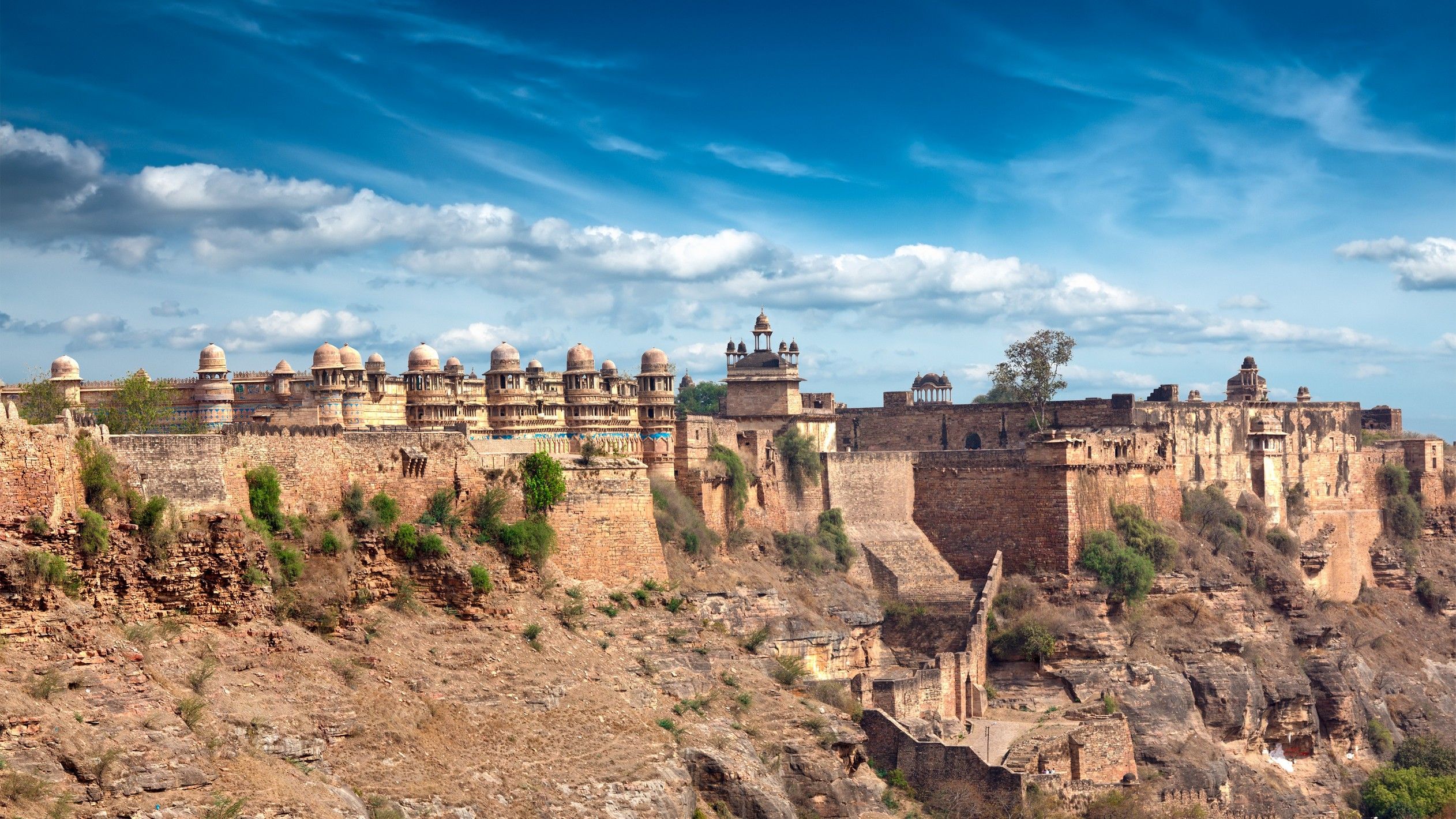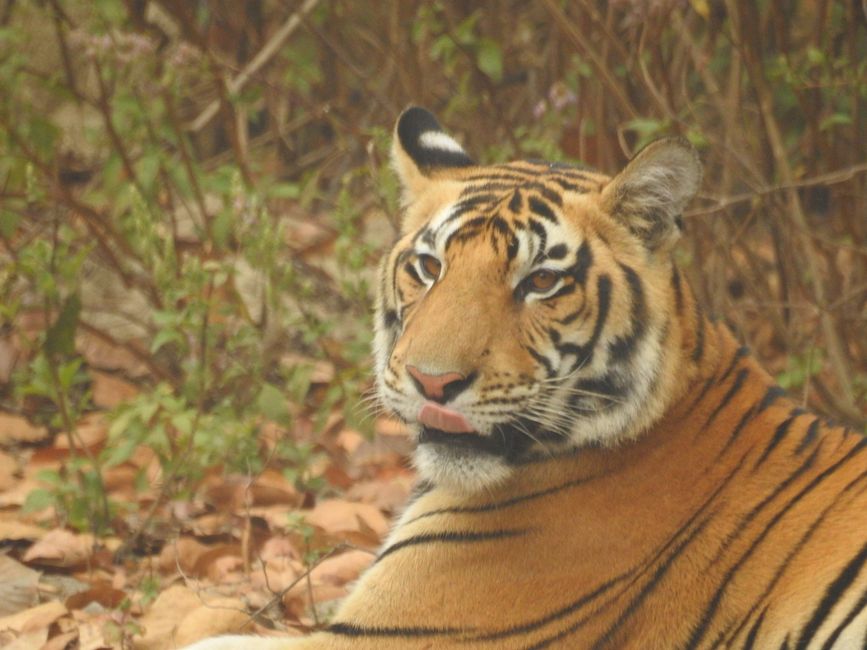BLOG 13: Weiter durch Rajasthan Richtung Jodhpur
Veröffentlicht: 14.03.2024
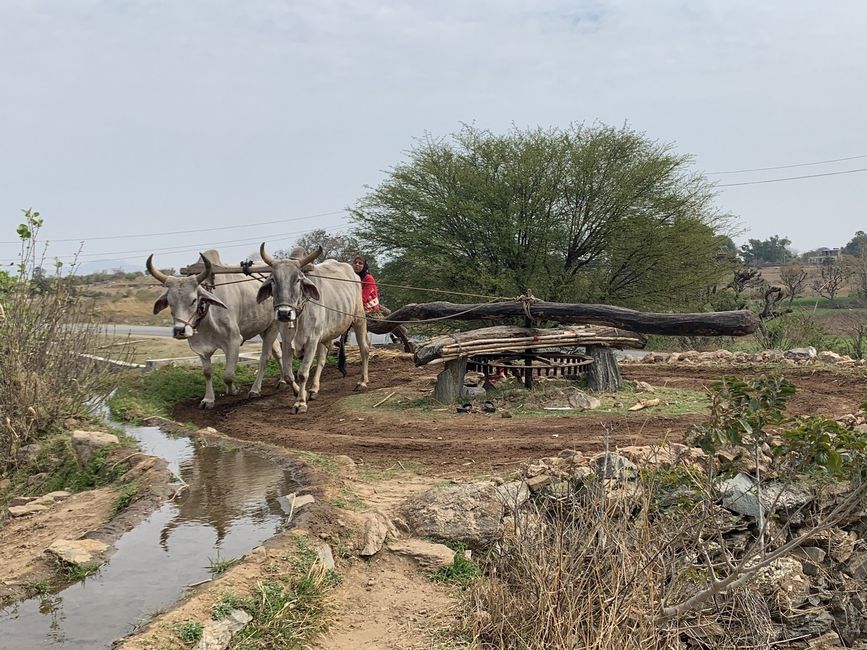
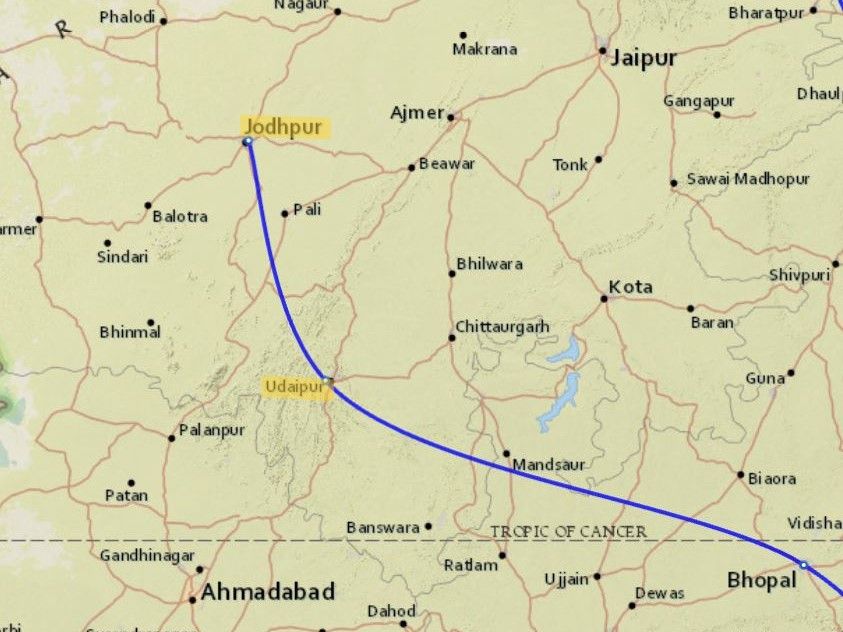
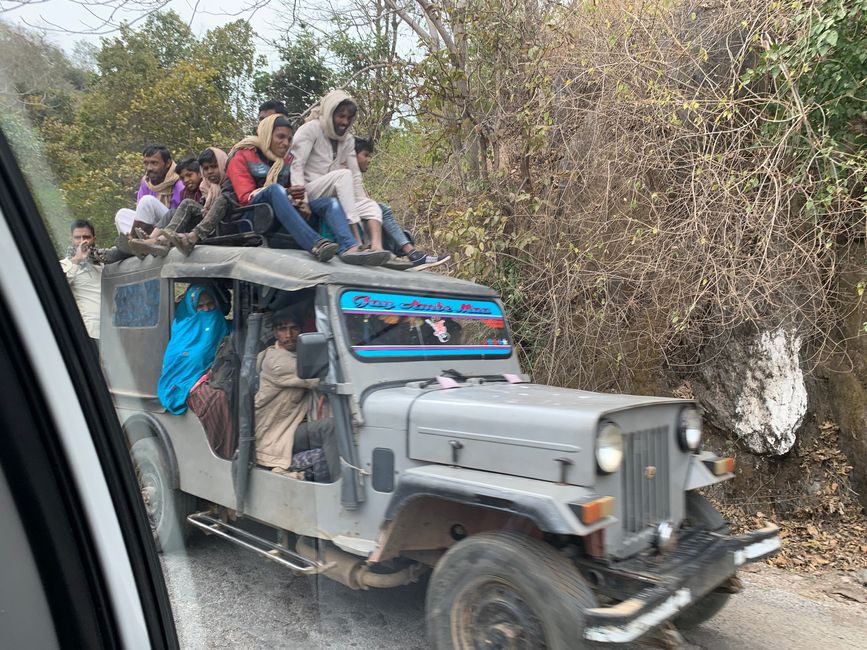
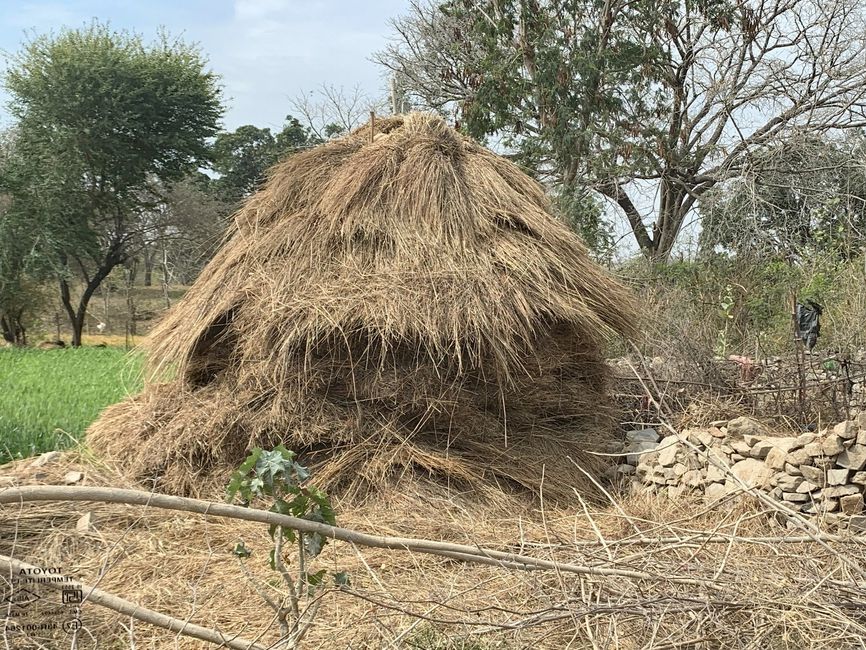
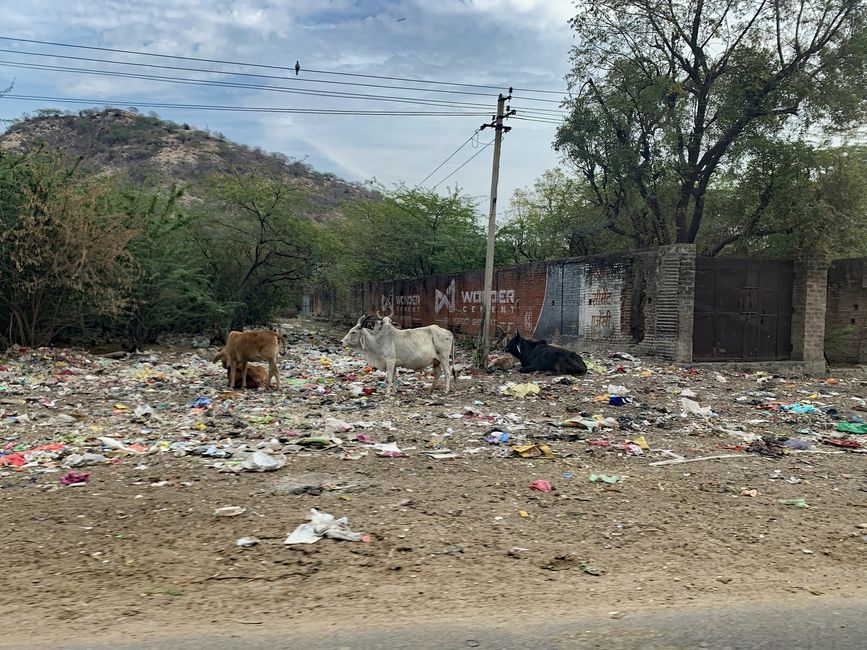
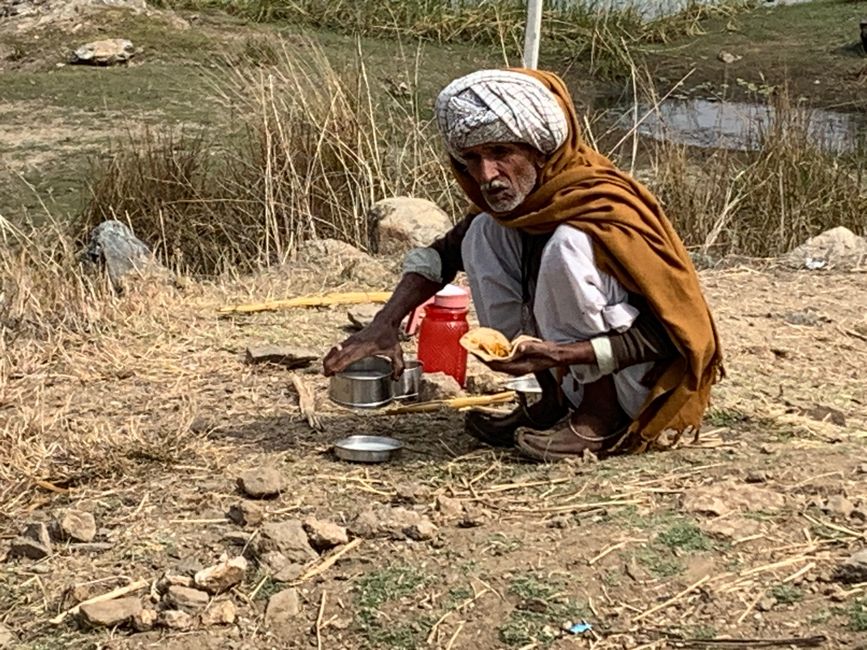
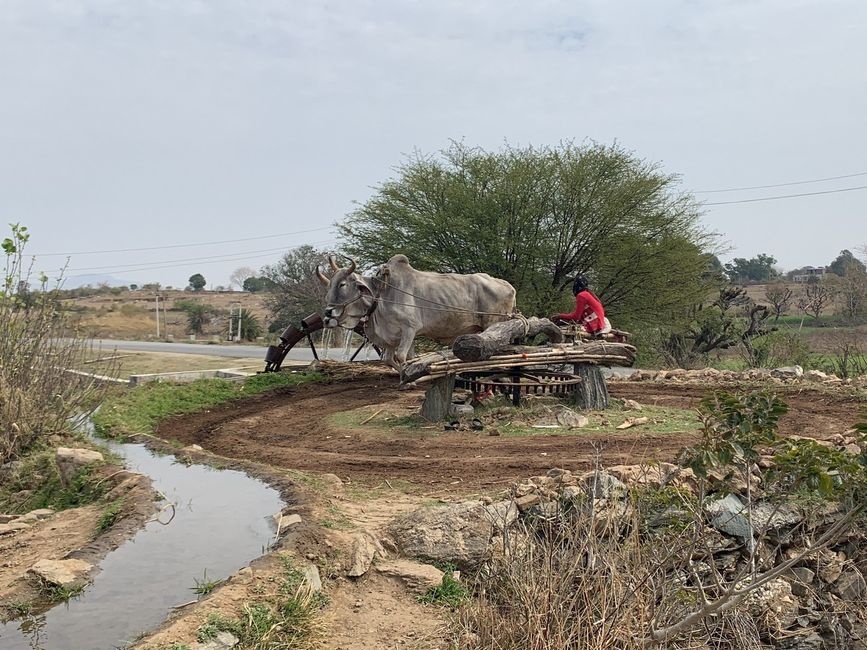
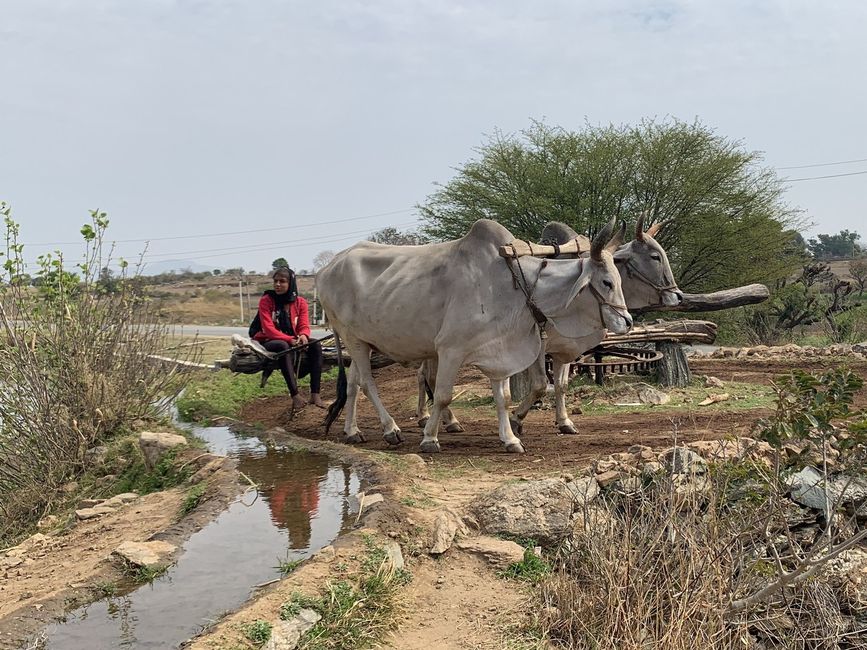
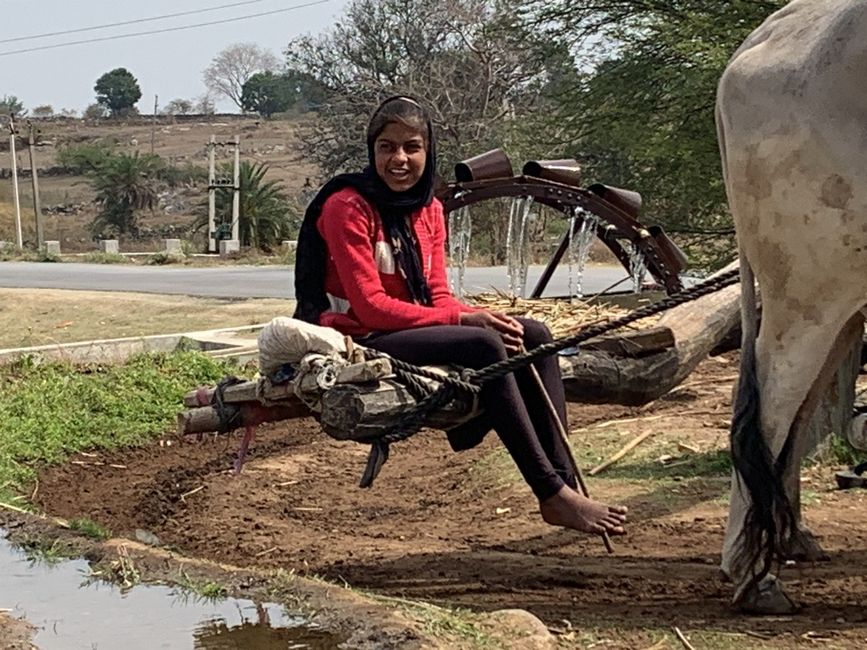
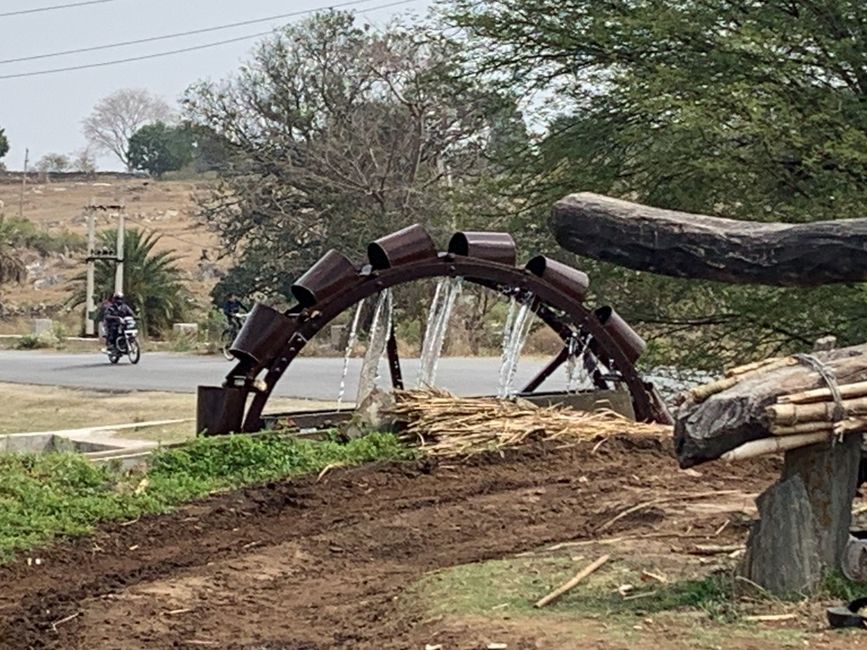
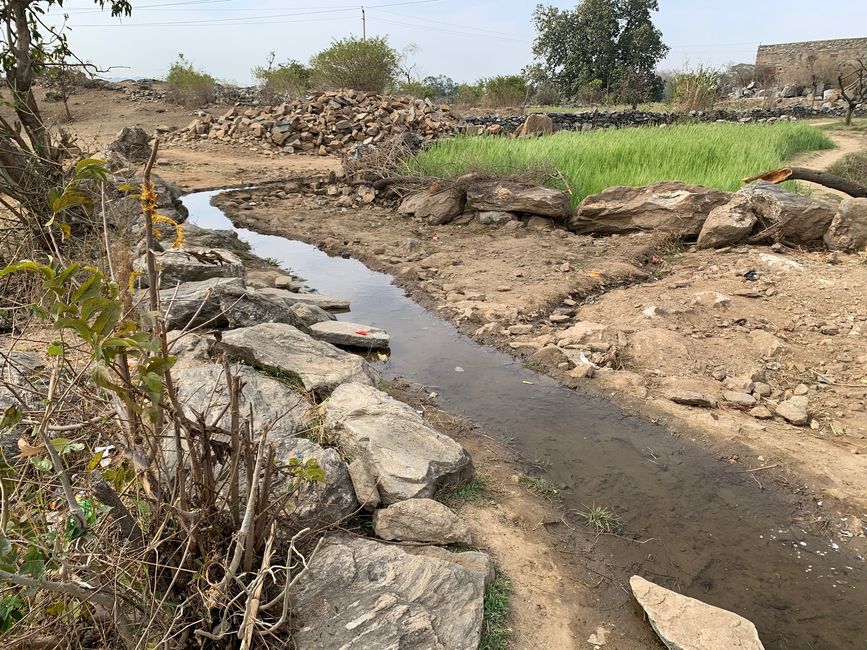
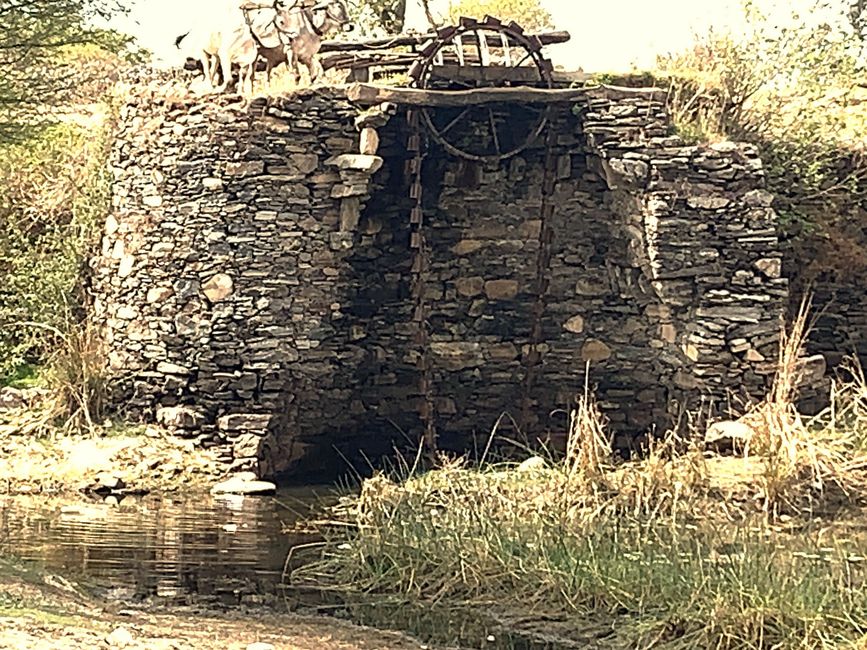
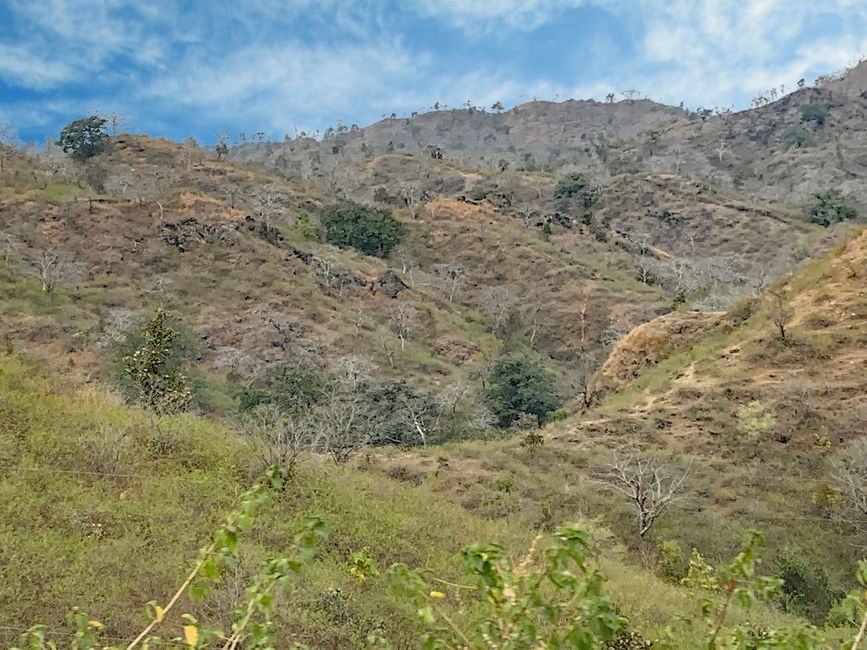
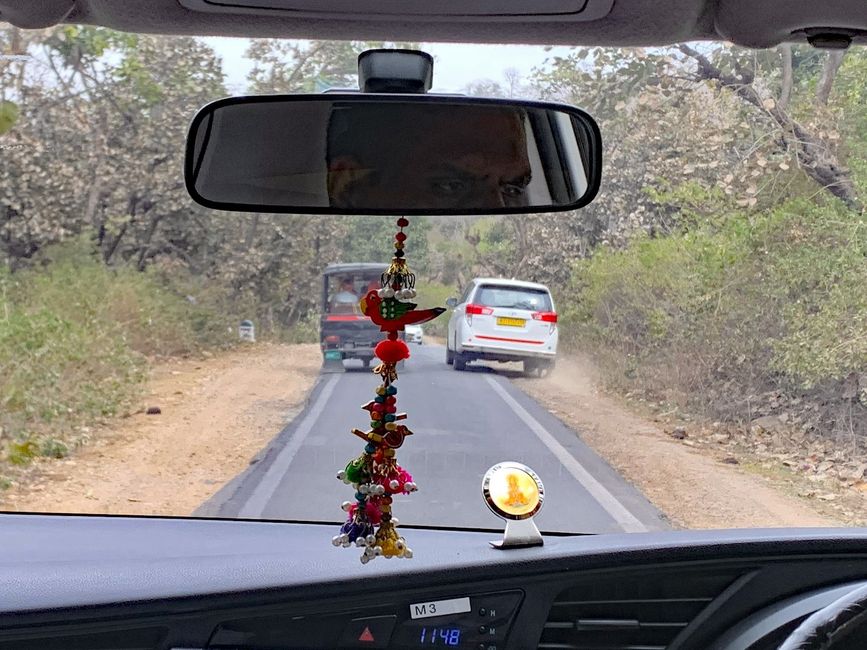
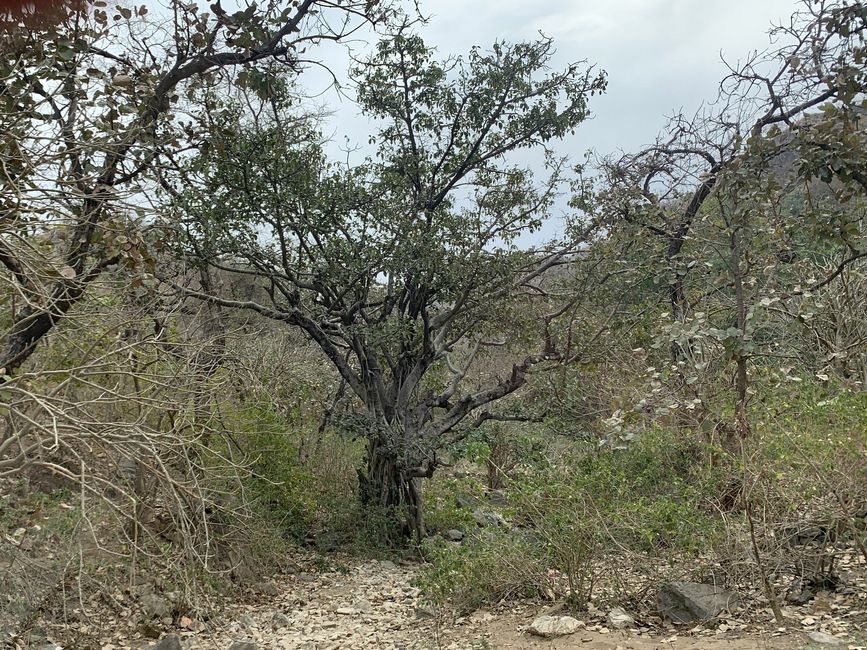

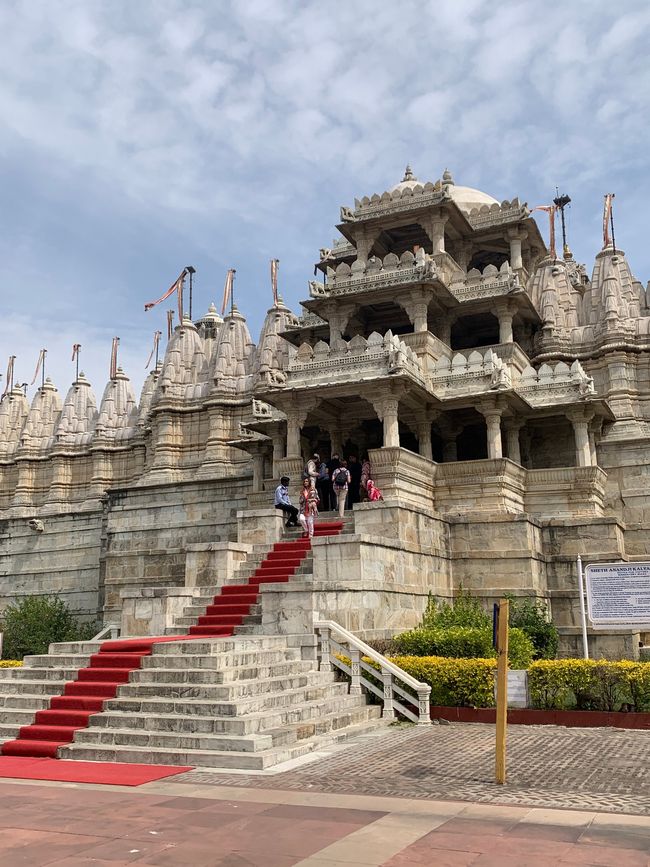
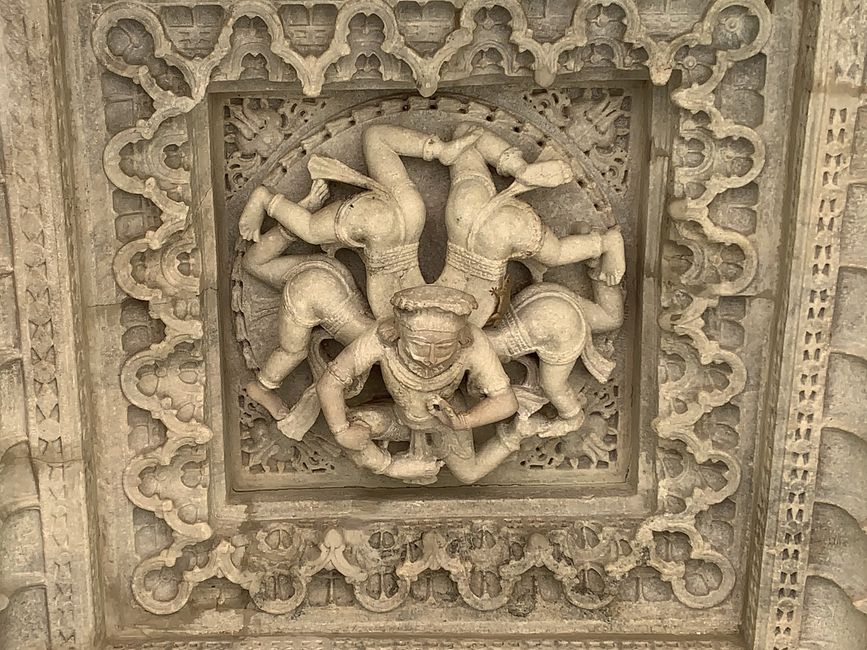

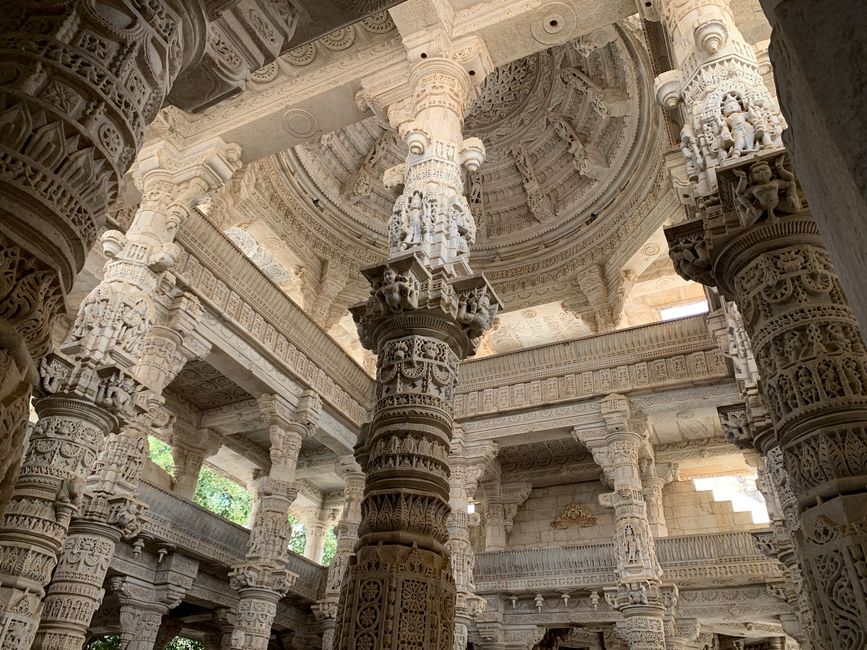
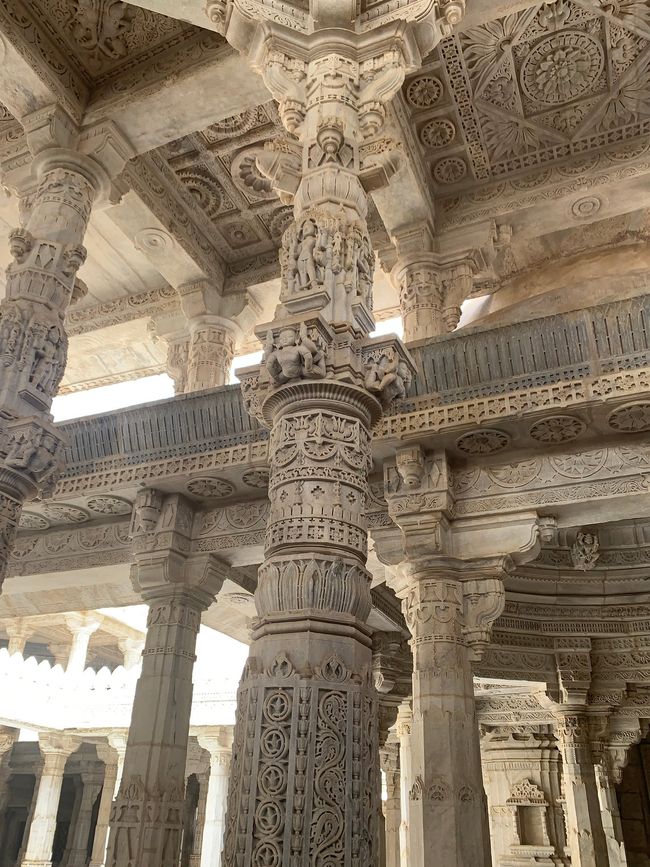
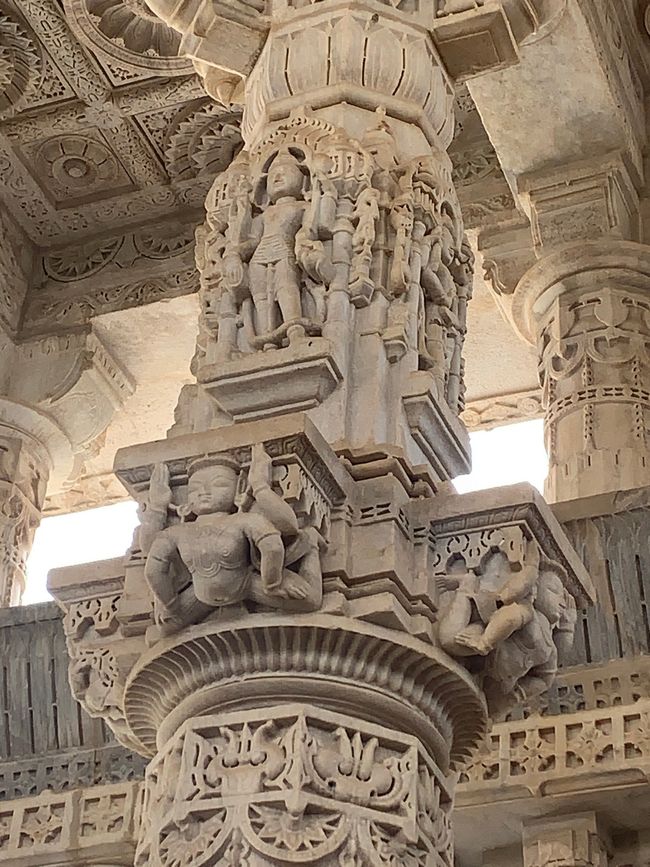
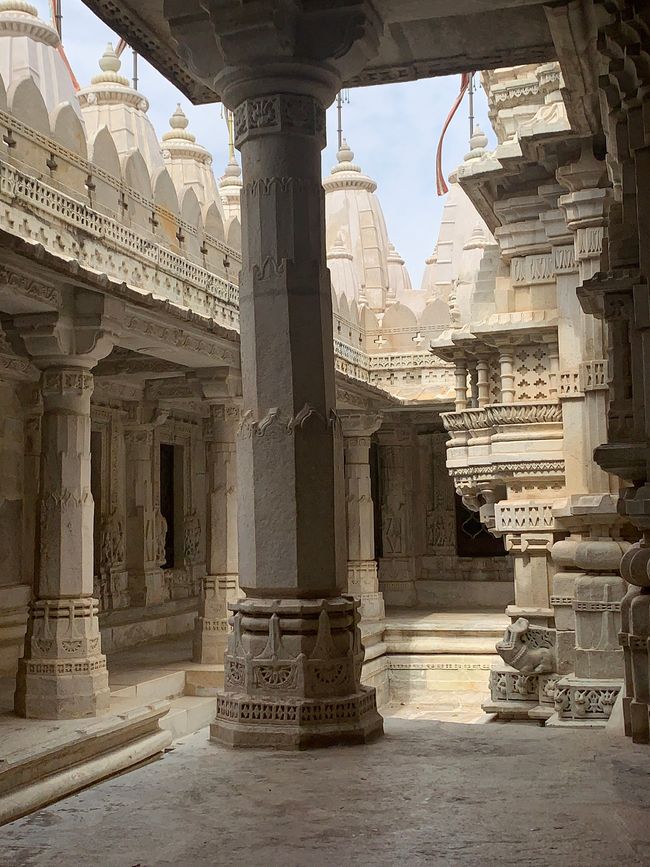
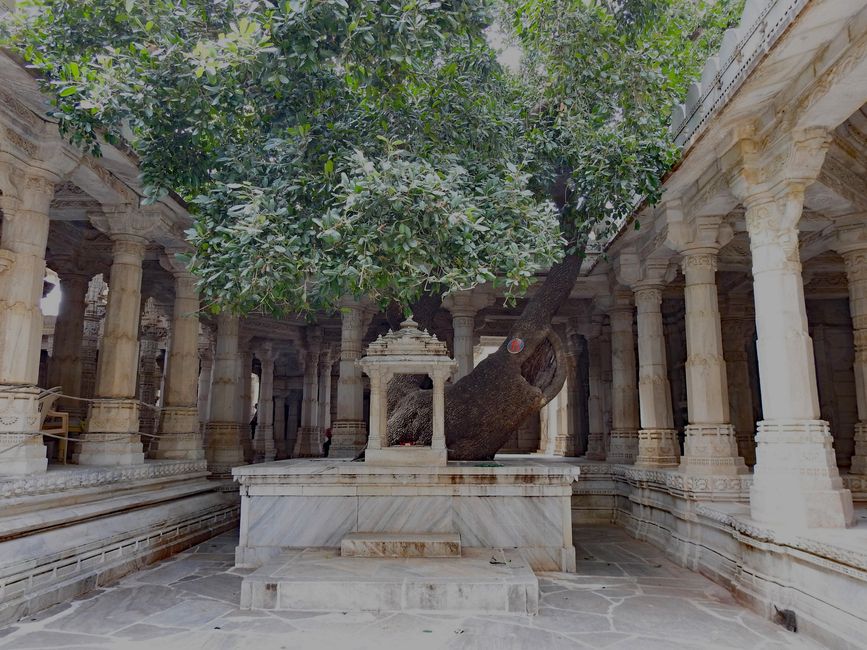
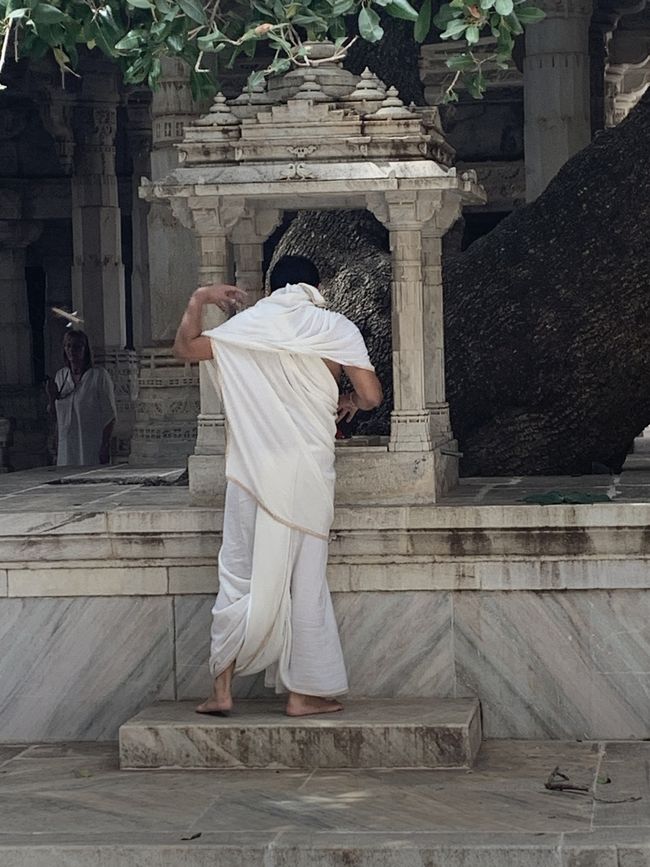


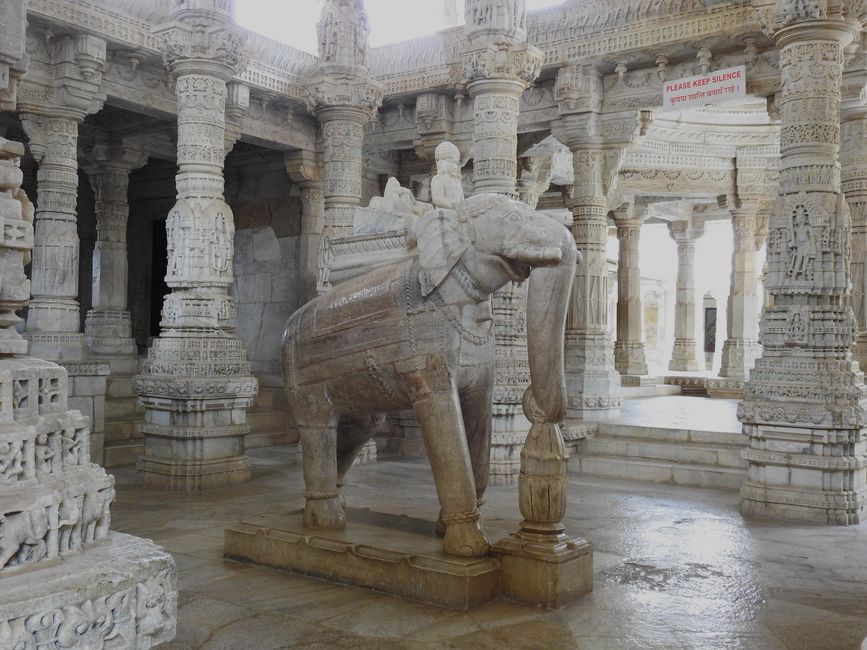

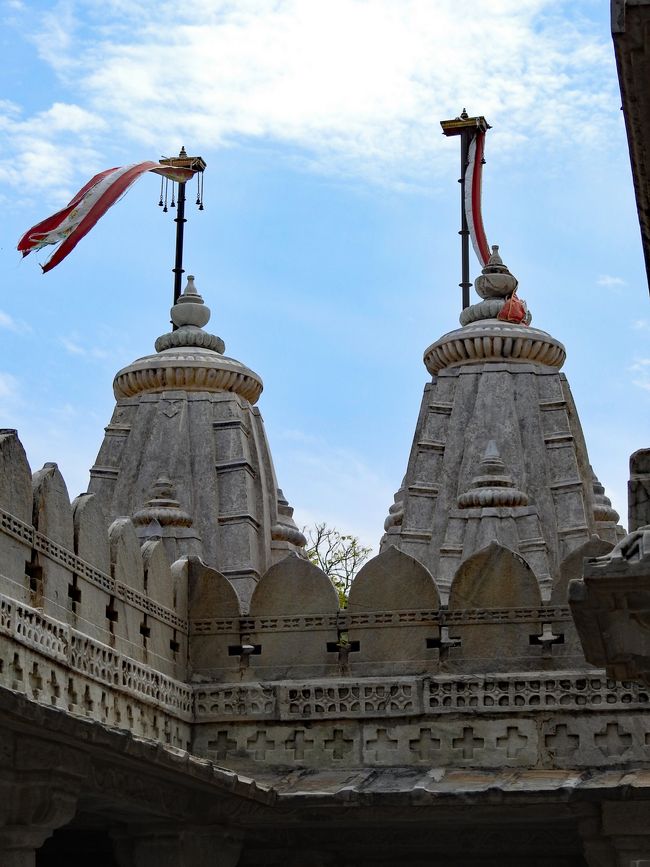
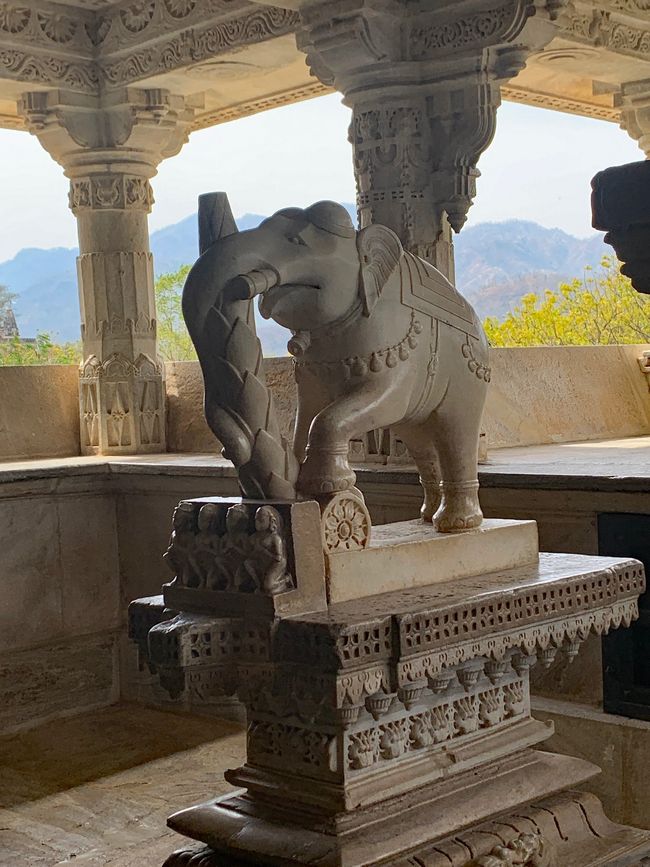
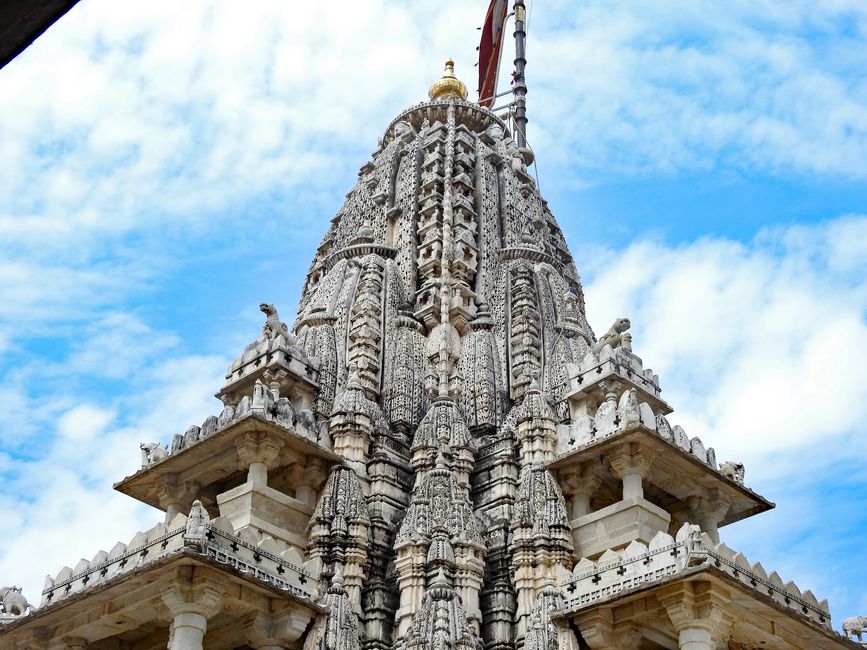

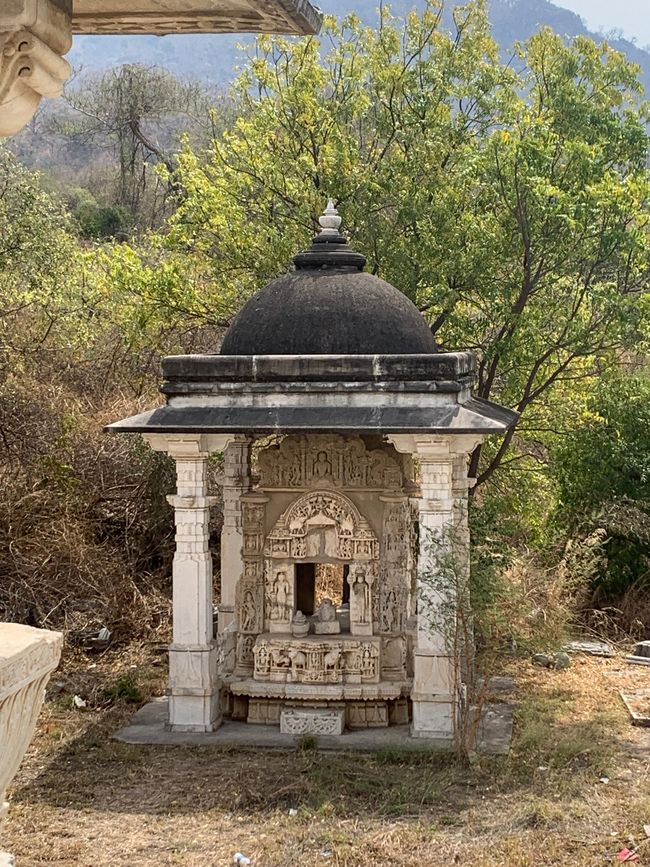

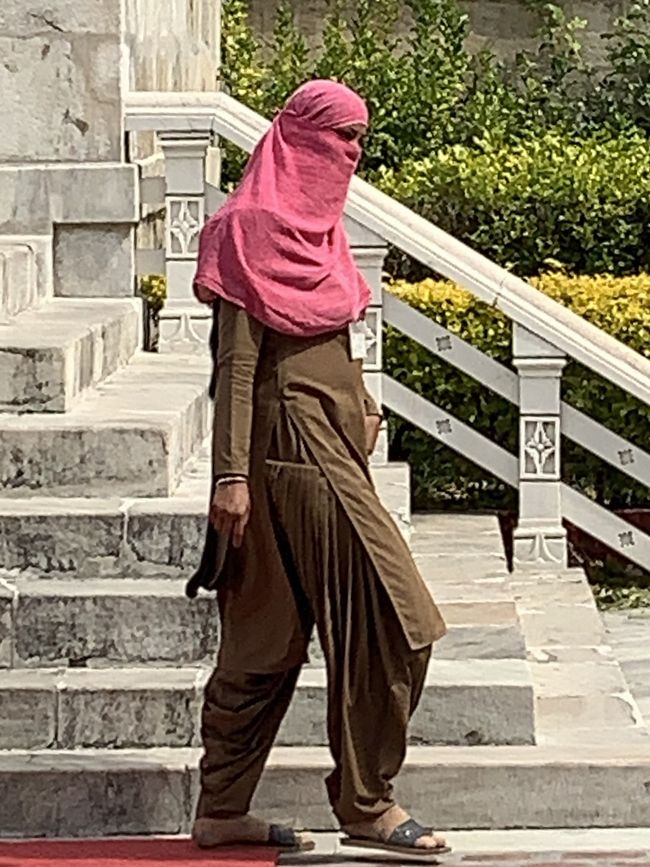

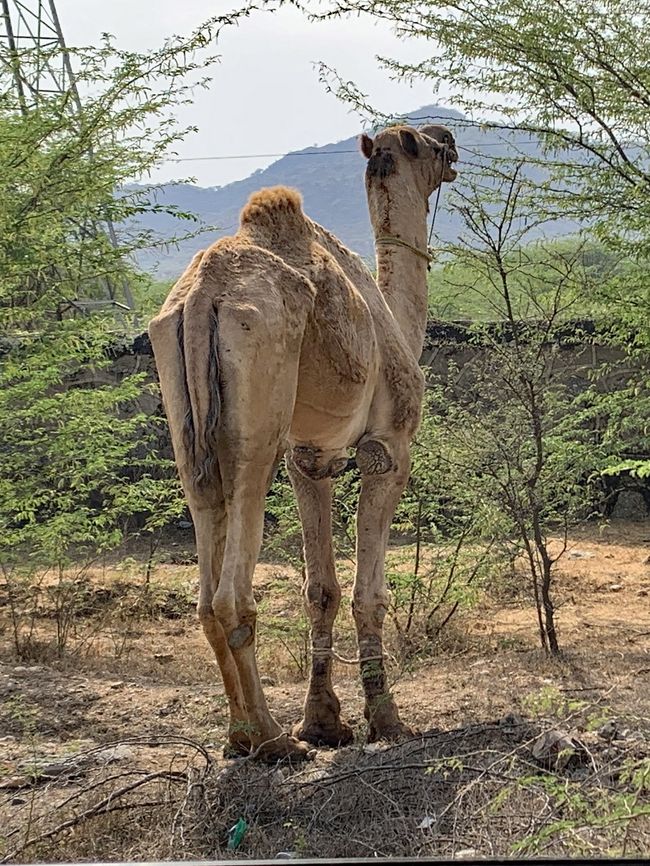
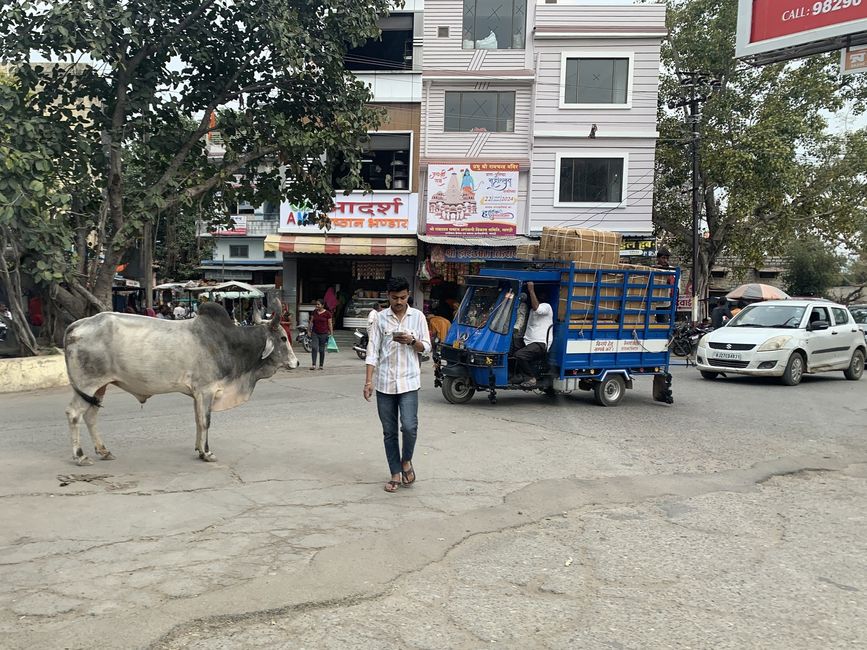
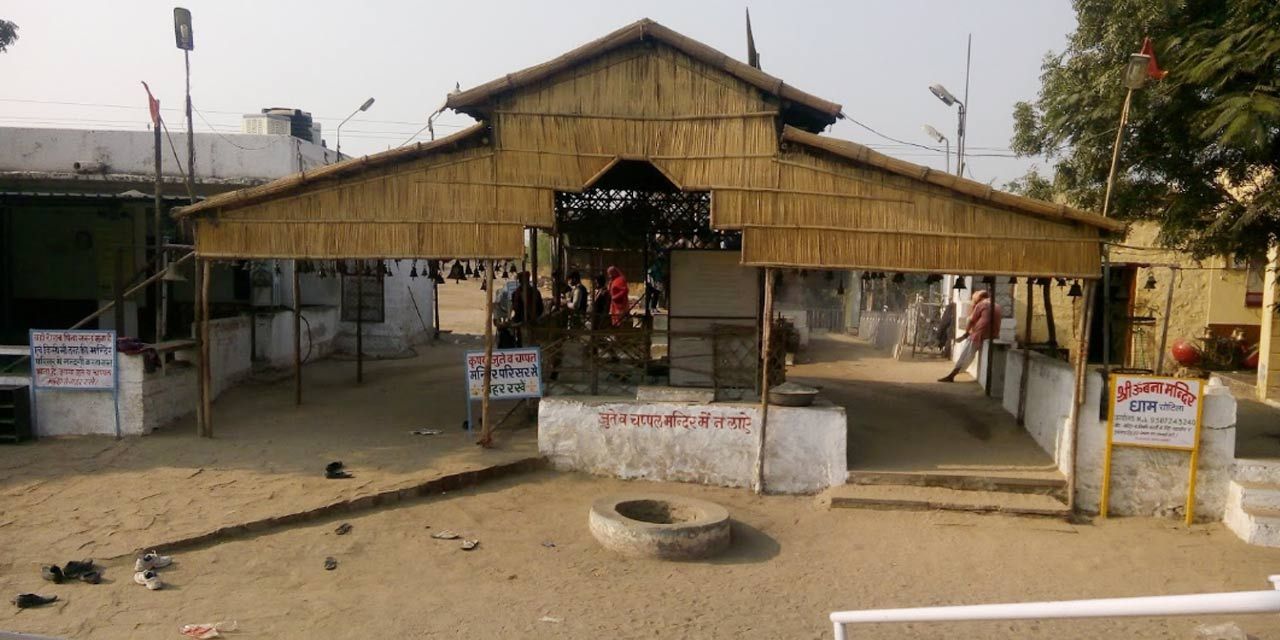

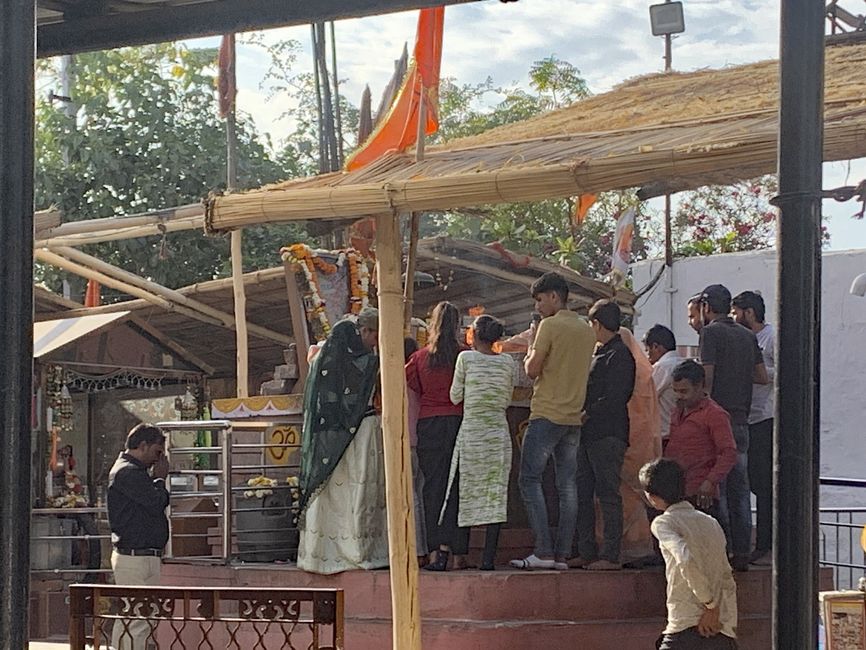
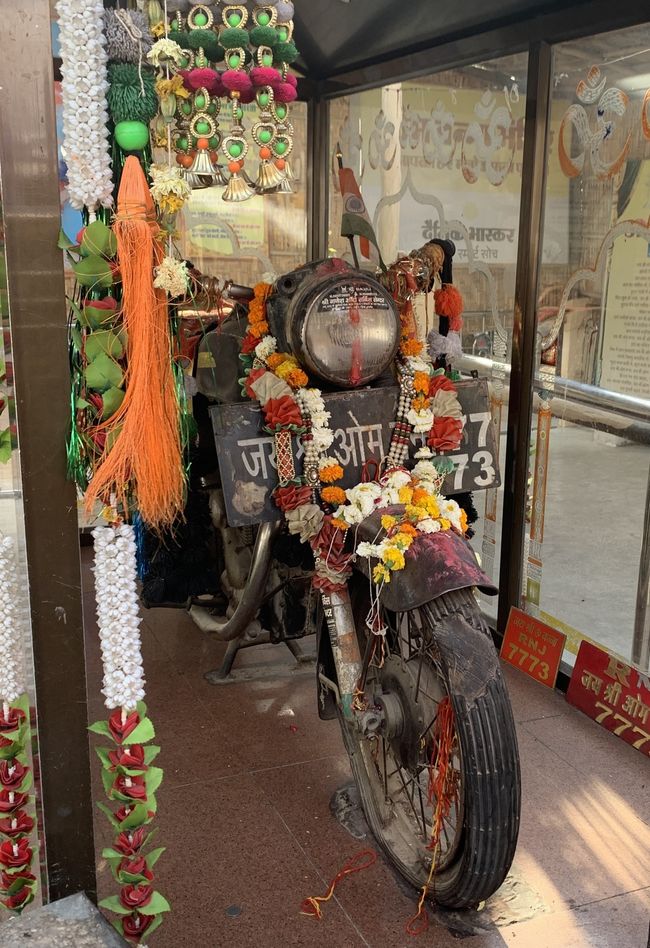
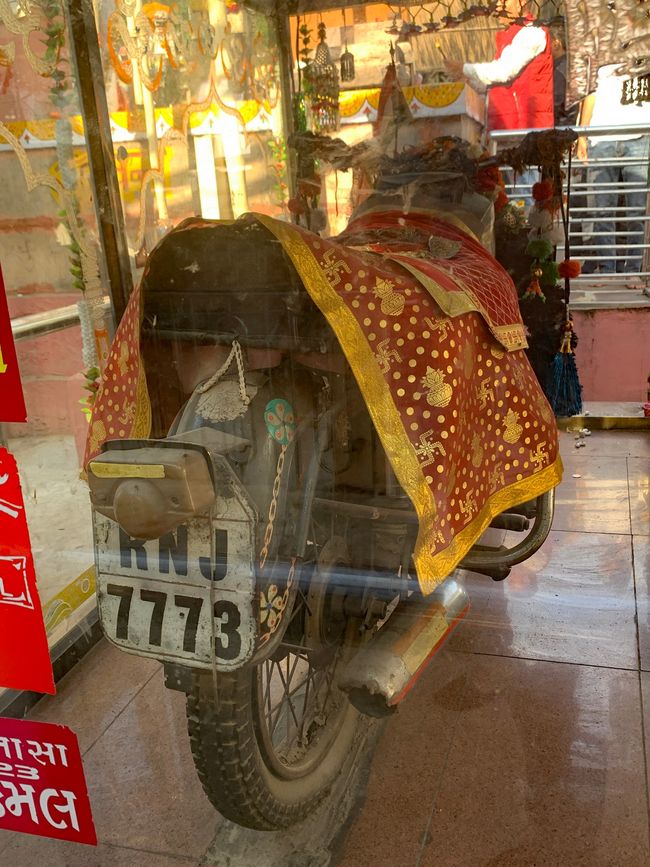
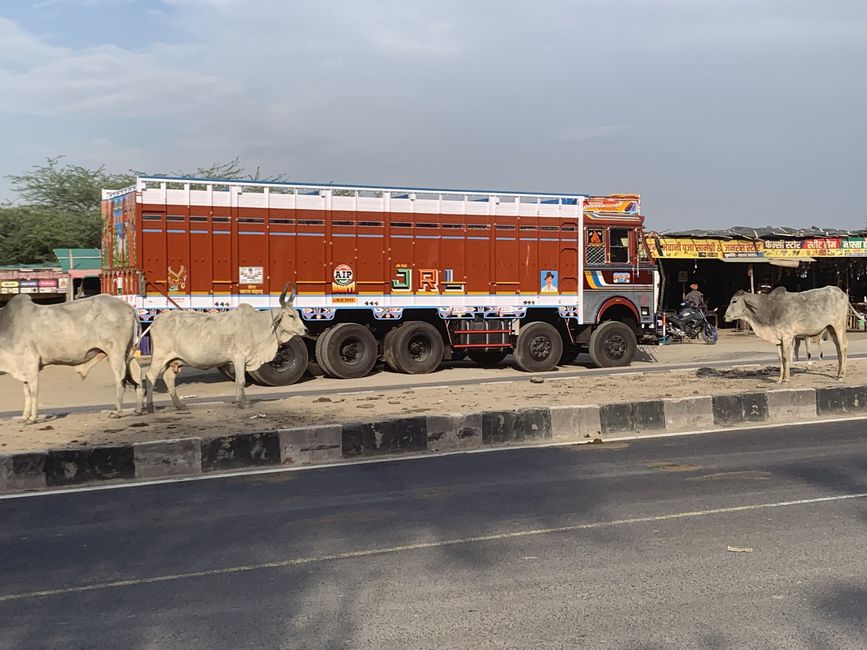
Newsletter abonnieren
Heute geht es weiter mit dem Auto, zu einem guten Teil auf Nebenstraßen, über Ranakpur nach Jodhpur. Es zieht zunächst Ländliches an uns vorbei, das auch die weniger schöne Seite Indiens zeigt – „Incredible India“, positiv wie negativ!
Einen ersten Höhepunkt ist unser Stopp bei einem von Kühen bewegten Wasserschöpfwerk – macht einen recht archaischen Eindruck auf uns. Die Kühe sind für die Hindus Indiens aus uralter Tradition ‚heilig‘ oder zumindest ‚unantastbar‘, trotzdem haben sie ökomische Bedeutung, zwar nicht Fleischlieferant, sondern als Arbeits- und Zugtier, Milch und Dungproduzent, wobei der Kuh (und auch Büffel) Mist nicht zum Düngen, sondern getrocknet als Brennmaterial verwendet wird.
Dieses Schöpfwerk wird im Zuge der rasch fortschreitenden Modernisierung Indiens wohl auch bald durch eine Dieselpumpe ersetzt werden….
Weiter geht’s auf immer schmäler werdender Strasse über einen Höhenzug bis nach Ranakpur zum berühmten Adinath - Tempel der Jain.
Der Jainismus gehört zu den drei großen Religionen Indiens und geht auf eine Zeit zurück, die mehr als 3.000 Jahre vor unserer Zeitrechnung liegt. Wie im Hinduismus wollen sich die Gläubigen aus dem Kreislauf der Reinkarnationen, dem Samsâra, befreien, um das Nirwana zu erreichen. Diese Religion ist zwar wenig bekannt, doch zeichnet sie sich durch ihr zentrales Prinzip der Gewaltlosigkeit und das Ideal der Nichtverletzung von Lebewesen aus. Jainas ernähren sich so, dass keine Tiere dafür leiden oder sterben müssen und Pflanzen nur im unvermeidlichen Maß geschädigt werden. Sie ernähren sich üblicherweise (lakto-)vegetarisch, manche auch vegan. Jainas tragen keine Kleidungsstücke, die ganz oder teilweise aus Materialien von Tieren hergestellt wurden, wie z. B. Gürtel oder Schuhe. Viele laufen auch barfuß, damit sie nichts tottreten. Als Besucher des Tempels muss man auch alles aus Leder ablegen, Schuhe, Gürtel, Geldbörse etc.
Dem Jainismus gehörten 2001/2002 etwa 4,4 Millionen Gläubige an, davon etwa 4,2 Millionen in Indien
Wunderschön geformte Jain-Tempel unterstreichen den Ruhm dieses berühmten Ortes. Die Tempel gelten als einer der fünf heiligen Orte der Jain-Gemeinschaft und wurden im 15. Jahrhundert während der Herrschaft von Rana Kumbha erbaut und von einer Mauer umgeben. Der zentrale Chaumukha (viergesichtiger Tempel) ist Adinathji gewidmet. Der Tempel ist eine erstaunliche Schöpfung architektonischer Pracht mit 29 Hallen und 1.444 Säulen, von denen keine zwei Säulen gleich sind.
Unser nächster Stopp – eigentlich auf Wunsch unseres Fahrers Mukesh – gilt dem Hindu Tempel Om Banna Mondi auch als „Bullet Baba“ oder „Motorrad Tempel“ bekannt. Im Zentrum des kleinen, aber gut besuchten Tempels steht wirklich ein Motorrad.
Beim Eingang sitzt ein Musiker, der auf einem „Samvadini“ spielt. Dieses Instrument ist die im letzten Jahrhundert entwickelte indische Version des europäischen Feld- oder Hand- Harmoniums. Die Veränderungen waren notwendig, um das Instrument für die klassische indische Musik verwenden zu können.
Aber wie ist es gekommen, dass viele Inder diesem 350 ccm Royal Enfield „Bullet“ Motorrad ihren Respekt zollen? Die Geschichte erzählt, daß am 02.12.1991 Om Banna, der Sohn eines ansässigen wohlhabenden Mannes, mit seinem Motorrad auf dem National Highway 62 unterwegs war. Er verlor die Kontrolle über sein Motorrad und fuhr gegen einen Baum – Om Banna verstarb sofort. Dies ereignete sich mehr oder weniger genau an der Stelle, an welcher heute der Tempel steht. Soweit so gut – aber das alleine reicht noch nicht ganz aus, um eine solche Euphorie für ein Fahrzeug auszuüben, oder? Nicht ganz: Die örtliche Polizei hat nach dem Unfall das Motorrad beschlagnahmt und in Verwahrung genommen. Am nächsten Tag war das Gefährt allerdings spurlos verschwunden. Als sich die Beamten auf die Suche machten entdeckten sie es an dem Ort, an welchem der Unfall geschehen war. Die Beamten beschlagnahmten es erneut, entleerten seinen Tank und sperrten es ein. Am nächsten Tag war es allerdings wieder verschwunden und stand an der Unfallstelle – fortan glauben viele Hindus, dass das Motorrad von selbst, bzw. vom Geist Om Bannas, zurückgefahren sei. Um diesem Wunder zu gedenken, haben sie den kleinen Tempel gebaut und besagtes Motorrad in einem Glaskasten eingeschlossen.
Jeder heimische Fahrer, der hier vorbeikommt, bleibt zumindest für ein kurzes Gebet stehen, um Segen für die weitere Fahrt zu erflehen – ist beim üblichen indischen Fahrstil jedenfalls notwendig. Deswegen auch unser Stopp….
Danke Mukesh – es hat (bei uns) geholfen!
-------------------------------------------------------------------------------------
Today we continue by car, mostly on side roads, via Ranakpur to Jodhpur. First of all, we pass rural scenery, showing also the less beautiful side of India - “Incredible India”, both positive and negative!
The first highlight is our stop at a water pumping station moved by cows - it makes a pretty archaic impression to us. For the Hindus of India, the cows are 'sacred' or at least 'untouchable' per ancient tradition, but they still have economic significance, not as a supplier of meat, but as working animals, as producers of milk and dung, although the cow (and buffalo) dung is not used for fertilization, but dried it is used as solid fuel.
As India's modernization progresses rapidly, also this pump will soon be replaced by a diesel pump...
We continue on an increasingly narrower road over a ridge to Ranakpur to the famous Adinath Jain temple.
Jainism is one of the three major religions of India and dates back to more than 3,000 years before our era. As in Hinduism, believers want to free themselves from the cycle of reincarnations, samsara, in order to achieve nirvana. Although this religion is little known, it is characterized by its central principle of non-violence and the ideal of not harming living beings. Jains eat in such a way that no animals suffer or die and plants are only harmed to the unavoidable extent. They usually eat a (lacto-)vegetarian diet, some also vegan. Jains do not wear garments made in whole or in part from animal materials such as: E.g. belt or shoes. Many also walk barefoot so that they don't step on any animal. As a visitor to the temple you must also take off everything made of leather, shoes, belt, wallet, etc.
In 2001/2002, around 4.4 million believers belonged to Jainism, around 4.2 million of them in India
Beautifully sculpted Jain temples highlight the glory of this famous place. Considered one of the five sacred places of the Jain community, the temples were built in the 15th century during the reign of Rana Kumbha and surrounded by a wall. The central Chaumukha (four-faced temple) is dedicated to Adinathji. The temple is an astonishing creation of architectural splendor with 29 halls and 1,444 pillars, of which no two pillars are alike.
Our next stop – actually at the request of our driver Mukesh – is the Hindu temple Om Banna Mondi, also known as “Bullet Baba” or “Motorcycle Temple”. There really is a motorcycle in the center of the small but well-visited temple.
At the entrance there is a musician playing a “Samvadini”. This instrument is the Indian version of the European field or hand harmonium, developed in the last century. The changes were necessary in order to be able to use the instrument for Indian classical music.
But how did many Indians come to pay their respects to this 350cc Royal Enfield “Bullet” motorcycle? The story goes that on December 2, 1991, Om Banna, the son of a local wealthy man, was riding his motorcycle on National Highway 62. He lost control of his motorcycle and hit a tree - Om Banna died instantly. This happened more or less exactly on the spot where the temple stands today. So far so good - but that alone isn't quite enough to create such euphoria for a vehicle, is it? Not quite: After the accident, the local police confiscated the motorcycle and took it into custody. The next day, however, the vehicle was disappeared without a trace. When the officers went looking, they discovered it at the place where the accident had occurred. Officers confiscated it again, emptied its tank and locked it up. The next day, however, it had disappeared again and was standing at the scene of the accident - from then on, many Hindus believe that the motorcycle drove back by itself or by the spirit of Om Banna. To commemorate this miracle, they built the small temple and enclosed the said motorcycle in a glass case.
Every local driver who passes here stops at least for a short prayer to ask for blessings for the further journey - which is necessary with the usual Indian driving style. That's why we stopped...
Thanks Mukesh – it helped (for us)!
Newsletter abonnieren
Antworten
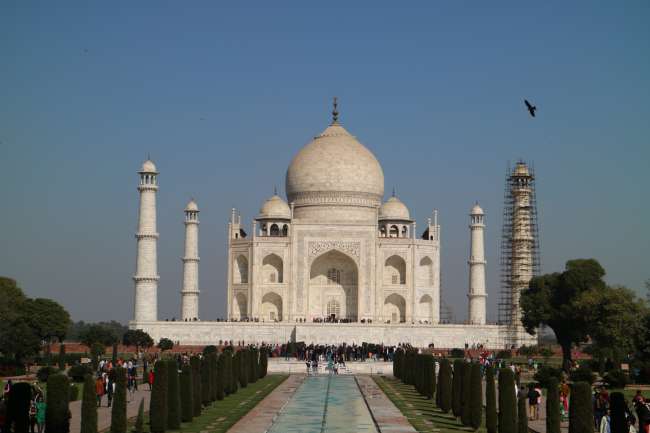
Reiseberichte Indien
